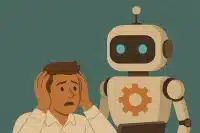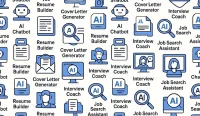The Sea Change Nobody Saw Coming
Remember participation trophies? Those awards handed out to everyone regardless of performance, signaling that effort mattered more than results? That era is ending. In 2025, a fundamental shift is happening: companies and institutions are returning to merit-based systems where those who work harder and produce more get to keep their jobs—and those who don’t, don’t.
This isn’t just corporate policy. It’s a cultural sea change happening at the exact moment when artificial intelligence is reshaping the workforce. And the timing isn’t coincidental. As AI automates routine tasks and raises the bar for human contribution, performance suddenly matters in ways it hasn’t in decades.
The old system had its logic. During the easy-money era of low interest rates and endless tech funding, companies could afford to carry underperformers. Job security was relatively guaranteed. Performance reviews were gentle. Everyone got a raise. But that system is collapsing—and what’s replacing it looks a lot more like the meritocracy that defined American economic mobility for generations.
Why Hard Work Still Matters
Here’s what gets lost in the AI job displacement debate: America remains one of the last places where hard work, dedication, and going the extra mile still count. People risk everything to come here because they know the system rewards performance. The American Dream is alive and well for anyone willing to work for it.
But there’s a darker flip side to this reality. As Republican strategist Elizabeth Pipko noted, “We can’t risk falling behind other nations because we choose to blame technology or blame others or blame ourselves, instead of deciding to get with the times, innovate, learn, just try to be the best we can possibly be.” In a competitive global economy, countries that prioritize fairness over excellence eventually fall behind.
This creates a painful but necessary tension. Companies implementing performance-based layoffs aren’t being cruel—they’re being realistic about survival in a world where competitors overseas will use every advantage, including AI tools, to outperform. When ChatGPT emerged, junior employees saw their roles reduced while senior workers captured the benefits. This wasn’t ageism—it was performance reality. Senior employees had the judgment, experience, and strategic thinking AI couldn’t replicate.
The Excuse That Doesn’t Fly
Picture the scene: someone at a bar complaining, “AI took my job.” But did it really? Or were they always late? Were they doing the minimum? Were they resistant to learning new tools? As Tiffany Smiley observed, “It’s an easy excuse for sure, and that doesn’t fly in this country. Maybe it did for a little while, but hard work, dedication, going the extra mile—that’s what this country is based on.”
This isn’t about blaming workers for displacement. Some roles genuinely disappear. But the reflexive “AI took my job” narrative often masks a deeper issue: many people who lost roles weren’t adapting, weren’t learning, weren’t demonstrating the value that justifies their compensation. In an AI-augmented economy, showing up isn’t enough. Contribution is measured in outcomes, not attendance.
The harsh truth is that AI isn’t taking anything away that can’t be replaced with better work. When companies automate routine tasks, they create opportunities for higher-value work. When AI handles data entry, humans focus on strategy. When AI generates initial drafts, humans refine and add judgment. The workers who embrace this transition—who learn to work with AI rather than against it—thrive. Those who resist or expect protection, don’t.
The Education System’s Failure To Adapt
The problem starts long before people enter the workforce. Across American schools, teachers are fighting a losing battle against ChatGPT and other AI tools. The focus is on detection and prevention: catching students who use AI to complete assignments. This is backward. The question shouldn’t be “How do we stop students from using AI?” but rather “How do we adapt our curriculum to teach students how to use AI effectively?”
This resistance reflects a deeper cultural problem. Rather than embracing innovation and preparing students for an AI-augmented future, many educators are trying to preserve an outdated model where memorization and routine execution were the primary skills. But those skills are exactly what AI automates. What AI can’t replace—critical thinking, creativity, judgment, strategic decision-making—are what schools should be emphasizing.
The same pattern appears in higher education. When Harvard students complained about grade inflation—specifically, that the institution was reducing grade inflation, making grades harder to earn—the response revealed how warped the system had become. Students described “soul-crushing” experiences and people “crying in their pillows” because their grades weren’t being inflated enough. The expectation had shifted from earning achievement to receiving it.
AI Isn’t Taking Jobs — It’s Changing Them
The engineers who thrive aren’t fighting AI — they’re mastering it. Learn how to turn automation into an advantage and stay ahead of the hiring curve.
Explore AI-Augmented Roles →The Generational Divide And The Status Quo Rejection
But here’s where it gets interesting: younger generations are starting to reject this participation-trophy culture. The evidence appears in unexpected places. In Argentina, when Javier Milei ran on a platform of radical economic reform and rejection of the status quo, he captured only 6% of the 16–24 vote. But among 25–34 year olds, he won 54%. This suggests that once people enter the workforce and experience the real economy, they start valuing merit over protection.
This generational shift is happening in America too. As Elizabeth Pipko noted, younger adults are “stepping up, rejecting status quo, and rejecting this negative that’s jammed down their throats saying life can be better.” Many are realizing that the participation-trophy system doesn’t serve them—it infantilizes them and prevents them from competing effectively in a global economy.
The irony is profound. Boomers, who built careers in a merit-based system, created the participation-trophy culture for their children. Now those same children, facing AI disruption and economic reality, are demanding a return to the systems their parents rejected. The moment for that transition is passing—and younger generations understand that the future belongs to those who can adapt, perform, and deliver value.
The Bifurcated Economy And The Coming Adjustment
The data reveals a painful truth: we have a bifurcated economy divided by age and performance. Higher unemployment among recent college graduates reflects that entry-level roles are being automated or eliminated. Senior positions remain stable because they require judgment, strategic thinking, and relationship management—skills AI can’t replicate.
This isn’t permanent. As AI tools become more sophisticated, they’ll eventually impact senior roles too. But the pattern is clear: the workers who thrive will be those who continuously learn, adapt, and demonstrate irreplaceable value. The workers who struggle will be those who expect protection, resist change, or assume that showing up is enough.
The adjustment will be painful. People who built careers on routine execution will face displacement. But the alternative—protecting obsolete roles at the cost of competitiveness—guarantees larger systemic collapse. Countries that prioritize fairness over performance eventually can’t afford either.
What Happens Next
The participation-trophy era is ending. Performance-based systems are returning. AI is accelerating this transition by making it obvious which workers contribute value and which are simply occupying roles. This isn’t cruelty—it’s economic reality in a competitive global economy.
For individuals, the path forward is clear: embrace continuous learning, master AI tools, focus on judgment and creativity that technology can’t replicate, and demonstrate measurable value. The American Dream still exists—but it’s reserved for those willing to work for it.
For institutions, the imperative is adaptation. Schools must teach AI collaboration, not AI prohibition. Companies must develop clear performance metrics and reward achievement. The system must create pathways for those displaced to retrain and re-enter at higher value levels.
The transition won’t be smooth. But the alternative—maintaining a system where performance doesn’t matter—guarantees decline. As one commentator observed, “Maybe people who work harder and produce the most should get to keep the job.” That shouldn’t be controversial. It should be obvious.
Key Takeaway
The participation-trophy era is ending. AI is accelerating a return to merit-based systems where hard work, productivity, and continuous adaptation determine who keeps their job. The education system must adapt by teaching AI collaboration rather than prohibition. Younger generations are rejecting status quo protectionism and demanding performance-based systems. In a competitive global economy, countries that prioritize fairness over excellence will fall behind.




